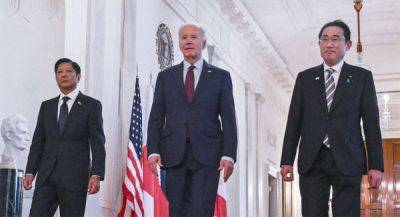Philippine Airlines FY23 profit: P21.2-B (up 105%)
Philippine Airlines [PAL 5.55, down 0.9%; 29% avgVol] [link] reported a FY23 net income of P21.2 billion, up 105.5% from its FY22 net income of P10.4 billion. Full-year revenues were up 29% to P179 billion, outpacing a 23.9% increase in operating expenses to P122 billion. The increases were driven by “the rising demand for air travel”, as evidenced by the 5.37 million increase in PAL’s FY23 passenger volume to 14.7 million and an increase in PAL’s passenger load factor from 72.0% in FY22 to 80.8% in FY23. Flights operated were up 36% to 105,294. The $379 million in net income (PAL’s operating currency is US$) was the highest in PAL’s history (excluding one-off restructuring benefits).
> How does it compare to CEB? PAL and Cebu Pacific [CEB 32.20, up 0.6%; 137% avgVol] are direct competitors in the domestic air travel market, so let’s take a closer look at how their stats compare.
> Why are they so different? PAL and CEB have fundamentally different business models. CEB is a classic “budget carrier” that thrives off cramming as many people on a plane as physically possible on as many quick flights as possible, with a focus on domestic and feasible regional destinations. PAL is a legacy prestige carrier that thrives off charging a premium for direct flights to high-end tourist destinations around the world.
> Which is better? They do different things, so it depends on the circumstances. Budget carriers like CEB are sensitive to fuel price spikes (like we saw in 2022), but with a flat long-term fuel price projection on jet fuel, this plays well in CEB’s favor. Conversely, legacy carriers like PAL tend to do well during economic upswings when consumer preferences and business travel demand increase interest in big-ticket, prestige destination travel.
MB bottom-line: PAL has come a long way from its bankruptcy. A lot of credit needs to go to Lucio Tan for putting so much of his own cash on the line to save the airline from being devoured by creditors, and to the subsequent generations of the Tan clan for overseeing a recovery that was anything but guaranteed. Sure, the rising tide of domestic and international air travel will float all boats, but PAL wouldn’t be







